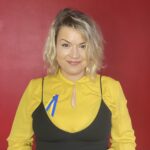Image is illustrative (Pixabay)
What is content creation?
Content creation refers to contributing added value information through different mediums, such as print and digital formats, to an interested audience. The information can be contributed in the simplest form, such as a photo or a short caption, or can be elaborated in more complicated formats, like an article, a video or a book. Digital content creation is one of the five competence areas that make up digital competence (Kluzer and Pujol Priego, 2018). For social media influencers and web-based freelancers, content creator has become a job title, but the umbrella term covers much more than just the act of developing and editing digital content. Therefore, for example, although one might have the skill and knowledge to take out their smartphone, snap a photo and modify it before sharing it on a social media platform, that does not necessarily mean one is competent in digital content creation.
Competences for content creation
DigComp (The European Digital Competence Framework for Citizens), a reference framework for digital competences designed by the European Commission, outlines four sub-competences for content creation:
- Developing and editing digital content in different formats like text, data and multimedia.
- Integrating and re-elaborating existing resources to create original content and knowledge.
- Understanding how copyright and licenses apply to digital content.
- Programming knowledge such as being familiar with the principles of programming or how to give understandable instructions for a computer system. (Klutzer and Pujol Priego, 2018)
In addition to being able to express creatively through digital means, this means that content creation competence also entails being able to analyse how new content fits into a wider body of resources and knowledge on the topic, critical awareness on how copyright and licences are to be applied as well as a technical understanding of how digital systems and software work (Ferrari, 2013).
Legal regulations for content creation
So why should we aim to be mindful of and informed in content creation at all? Anyone with a suitable device and internet connection can create and spread their ideas; competence is not a prerequisite to be able to do that. Nor does competence necessarily lead to desirable behaviour – for example, one might be very aware of copyright rules and licences, but still illegally download films or music (Ferrari, 2013).
In short: the answer is due to recent regulations and trends in content creation and dissemination. The new Directive on Copyright in the Digital Single Market that came into effect on 7 June 2019 means more accountability for both users as well as social media platforms in order to tackle the misuse of third-party content online (Myers, 2019). For example, a sample of a song released 50 years ago can end up in a pop song in 2019, which is then parodied in videos, re-mashed in apps such as TikTok and Snapchat, featured in vlogs, and maybe outtakes of the video end up in memes on social media platforms or in symbols such as emojis or gifs on messaging platforms. This widespread social practice is called collaborative crossmedia creation – taking existing tools, resources or knowledge and combining them in new ways for new purposes (Drotner and Schrøder, 2010). Dabbling on the border of promoting or abusing someone’s intellectual property in such a way has to adjust to these new legal norms. Therefore, so must we.
Educators, both formal and non-formal, should also keep in mind that in order to assess the credibility of content, one must be aware of possible dangers and ways of manipulating digital content. For example, the Deepfake app, which allows users to manipulate videos and do face swaps, has created mayhem because the manipulation can be indistinguishable to the naked eye, but it can nevertheless be discovered using artificial intelligence (Maras and Alexandrou, 2019) for which programming competence can go a long way. First comes knowledge, then good practices follow.
In a digital world, where information is easily available and accessible through several online platforms in different forms, valuable content will stand out – that helps in building a strong relationship between the creator and the user. Thus, the more valuable the content is, the stronger the relationship will be, which will result in a higher engagement and impact on both the individual and society. In learning how to create valuable content, one also increases their social capital. That is how content creation goes way further than just the amount of likes the post gets.






